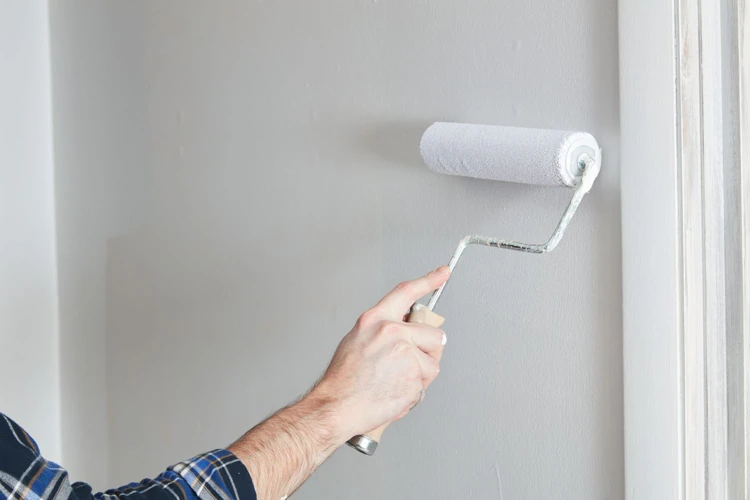Embarking on a painting project can transform a space from mundane to magnificent. However, achieving that high-quality finish is often a matter of skill and know-how. Professional painters understand that optimal paint coverage is not just about the color or quality of paint, but also the techniques and tools used during application.
The Importance of Optimal Paint Coverage
Optimal paint coverage ensures a uniform finish, free of streaks and patches. It’s the hallmark of a professional job, reflecting meticulousness and expertise. Achieving this requires a strategic approach to paint application, one that maximizes materials and time.
Understanding Painting Efficiency
Painting efficiency involves minimizing waste and maximizing results. It’s about the speed of application without compromising on quality. Every stroke of the roller should contribute to a flawless finish, with painting efficiency playing a pivotal role in the successful completion of a project.
Choosing the Right Tools
Just as a craftsman is only as good as his tools, the perfect paint job begins with selecting the right painting implements. The market is awash with various options, each designed for specific surfaces and finishes.
Selecting the Best Paint Roller for Your Project
When it comes to rollers, not all are created equal. Factors such as nap length, material, and roller size must be considered. The best roller will hold enough paint to allow for even paint application while not overloading, dripping, or causing unnecessary mess.
Interior Painting Guide: Tools and Materials
- High-quality rollers and brushes
- Drop cloths and painter’s tape
- Paint trays and liners
- Extension poles for high and large walls
Equipping yourself with these essentials as part of your interior painting guide will set the foundation for a smooth painting process.
Mastering Paint Roller Techniques
Even with the best tools in hand, the technique is what separates amateurs from seasoned painters. Mastering paint roller techniques is crucial for a uniform coat and professional-looking results.
Fundamentals of Roller Loading Tips
Effective roller loading tips involve dipping the roller into the paint tray and rolling it back and forth over the tray’s ridges. This action ensures the roller is saturated but not dripping with paint, a critical step for achieving optimal coverage.
Steps for Even Paint Application
- Start by painting in a small, 2×2 foot section.
- Apply paint in a ‘W’ pattern to distribute paint broadly.
- Fill in the pattern without lifting the roller, blending the edges.
Adhering to these steps will help maintain a consistent finish and avoid the need for multiple coats.
Efficient Roller Use for Enhanced Productivity
Time is money, and in the world of professional painting, productivity can significantly impact profitability. Therefore, efficient roller use is not just about speed, but also about precision and sustainability of effort.
Maximizing Paint Application Methods
Part of maximizing paint application methods is knowing when to reload the roller with paint. Ideally, one should avoid pressing harder to squeeze out more paint. Instead, it’s better to reload when the paint no longer flows easily.
Paint Roller Skills for Consistent Results
Paint roller skills also encompass knowing how to handle corners and edges. Using the roller’s edge delicately can eliminate the need for additional brushes and ensure sharp, clean lines.
Advanced Painting Techniques
For those seeking to elevate their painting prowess, advanced techniques can add finesse to any painting project. It’s about understanding the subtleties that lead to exceptional finishes.
Professional Painting Tips for Perfect Finishes
Some professional painting tips include keeping a wet edge to avoid lap marks and feathering out paint where thick layers meet thinner ones. This attention to detail is what makes a professional’s work stand out.
Secrets to a Flawless Interior Paint Job
The secrets to a flawless finish lie in meticulous prep work, quality materials, and a steady hand. It’s also about patience and allowing each layer to dry thoroughly before applying the next.
Common Painting Challenges and Solutions
Even with the best preparation and technique, challenges can arise. Being equipped with the knowledge to tackle these issues head-on can save time and ensure the integrity of your work.
How to Achieve Even Paint Coverage
To secure even paint coverage, it’s important to maintain a consistent pace and pressure. If a second coat is necessary, wait until the first one is completely dry to maintain texture consistency.
Avoiding Common Paint Application Mistakes
Common blunders include overloading the roller, leading to drips, or underloading, resulting in an uneven finish. Maintaining awareness of your roller’s saturation level is key in avoiding these pitfalls.
Conclusion and Additional Resources
In conclusion, achieving a professional paint job is a balance of art and technique. It’s about understanding the behavior of paint and how it responds to surfaces, tools, and methods.
Recap of Efficient Painting Practices
Remember, successful painting is rooted in optimal paint coverage, the right tools, and refined paint roller techniques. Each step, from roller loading to application, is an opportunity to demonstrate your skill.
When embarking on a painting project, achieving optimal paint coverage is crucial for a professional finish. One key factor in this process is knowing how to properly load your paint roller cover. But before you even dip your roller into the paint, ensure you’re kitted out with the right safety equipment by checking out our guide on essential safety gear for spray painting. And don’t forget, the color you choose can look different depending on the lighting conditions, so make sure to read our insights on how color samples can vary with lighting to help you make the best choice for your space.
Further Reading and Expert Advice
For those eager to delve deeper, additional resources and expert advice are readily available. Professional workshops, online tutorials, and trade publications can provide a wealth of knowledge for continuous improvement.




